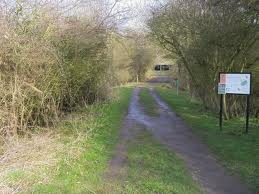 Blacked-Out Britain War Museum
Blacked-Out Britain War Museum Brampton Wood
Brampton Wood Hinchingbrooke Country Park
Hinchingbrooke Country Park Island Hall
Island Hall Kimbolton Castle
Kimbolton Castle Little Paxton Nature Reserve
Little Paxton Nature Reserve Ramsey Abbey Gatehouse
Ramsey Abbey Gatehouse Ramsey Rural Museum
Ramsey Rural Museum Taggart Gallery and Museum
Taggart Gallery and Museum The Cromwell Museum
The Cromwell Museum
Brampton Wood is the second largest ancient woodland in Cambridgeshire, and is at least 900 years old. The first records date back to the Doomsday Book, “woodland pasture - half a league long and 2 furlongs wide”, when animals such as pigs used to feed on acorns. A large earth bank marks its ancient boundary, with several other minor banks and ditches inside, thought to be prehistoric field drainage systems.
The trees are mostly oak, ash and field maple, and in the past the wood has been used for hazel poles, timber, and hay as well as oak bark for tanning. The entire wood was once clear felled and has regenerated naturally, when some areas were planted with conifers. The conifers provide habitat for the pine beauty and pine hawk moths, and several types of fungi - plums-and-custard is a particularly colourful species you might see on stumps.
Some areas are now coppiced and provide food for dormice, which were reintroduced to the wood in 1992. They are most active at night and so are difficult to see. There are over one and a half miles of woodland rides here, some are at least 200 years old. Their important plants include meadow grasses, cowslip, yellow rattle, devil’s-bit scabious, primrose, water-purslane, wood spurge and both hairy and trailing St. John’s wort.
Woodland butterflies, such as the white-letter hairstreak, brown argus and white admiral feed on the flowers and insects provide food for birds such as the spotted flycatcher and green woodpecker. Several beetle larvae rely on dead wood including the uncommon Anaglyptus mysticus, a longhorn beetle and Ischnomera cyanea, a thick-legged flower beetle. Blackthorn thickets provide a home for five colonies of black hairstreak butterflies, one of the UK’s rarest butterflies.
Wild pear is a native but uncommon species and the two trees are hidden away in the corner of the wood may be the last surviving ones in the county. There are several small ponds where smooth and great crested newts are found as well as dragonflies and water insects.
No Comments Yet - Why not be the first to leave a comment
Every effort is made to make sure that all the information is correct but we strongly recommend that you call Brampton Wood before you set off on your day out to confirm opening times and admission prices.
Please also note that the position on Google maps for Brampton Wood is a rough estimate using their postcode in the database and might be slightly out.
It may also be worth clicking the web link for Brampton Wood to see if there are any special events coming up or currently on.